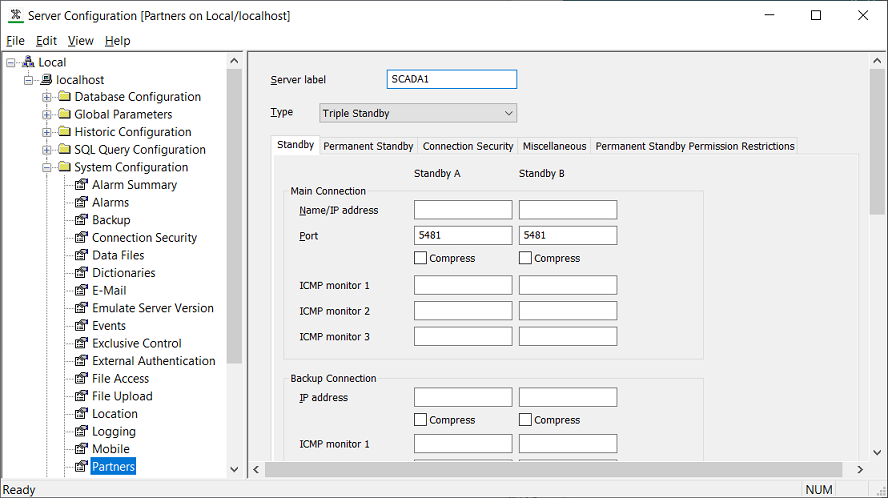Multi-server systems can use single or dual ethernet (dual network) connections between the servers.
When a single ethernet connection is used, there is only one connection and this is referred to as the ‘Main’ connection.
When dual ethernet connections are used, there are two connections—the ‘Main’ connection and a ‘Backup’ connection. The ‘Backup’ connection is only used if the ‘Main’ connection fails. If a failed ‘Main’ connection is restored, the server will stop using the ‘Backup’ connection and will return to using the ‘Main’ connection instead.
Dual ethernet connections can only be used with servers that support dual networking and have two network cards. Geo SCADA Expert only supports dual networking when:
- The server’s 2 network cards have different subnets (defined in the network card configuration made via the Windows Control Panel>Network Connections settings).
- The server’s 2 network cards have the same subnet but use ‘teaming’. When ‘teaming’ is enabled, both Windows and Geo SCADA Expert recognize the two cards as a single network. ‘Teaming’ is a server feature that is supported by some network cards. For information on setting up the ‘teaming’ feature, please refer to the manufacturer’s documentation supplied with your server or network cards.
If your server has 2 network cards that have the same subnet but do not support ‘teaming’, you can either:
- Re-engineer your network so that there are two subnets, and then reconfigure the network cards to use the subnets (the network cards should use different subnets).
or:
- Configure Geo SCADA Expert to use only a single network (set Geo SCADA Expert to ignore the second network interface).
You can configure the settings for the ‘Main’ and ‘Backup’ connections on the Server Configuration Tool’s Partners tab:

To configure the Main Connection and Backup Connection settings, perform the following tasks on each server in the server architecture:
- Display the Server Configuration Tool and access the System Configuration>Partners settings.
- Define the Names/IP Addresses of the Other Servers.
- Define the Port Settings for a Server’s Connections.
- Define the Server Compression Settings.
- Define the ICMP Monitor Settings for a Server.